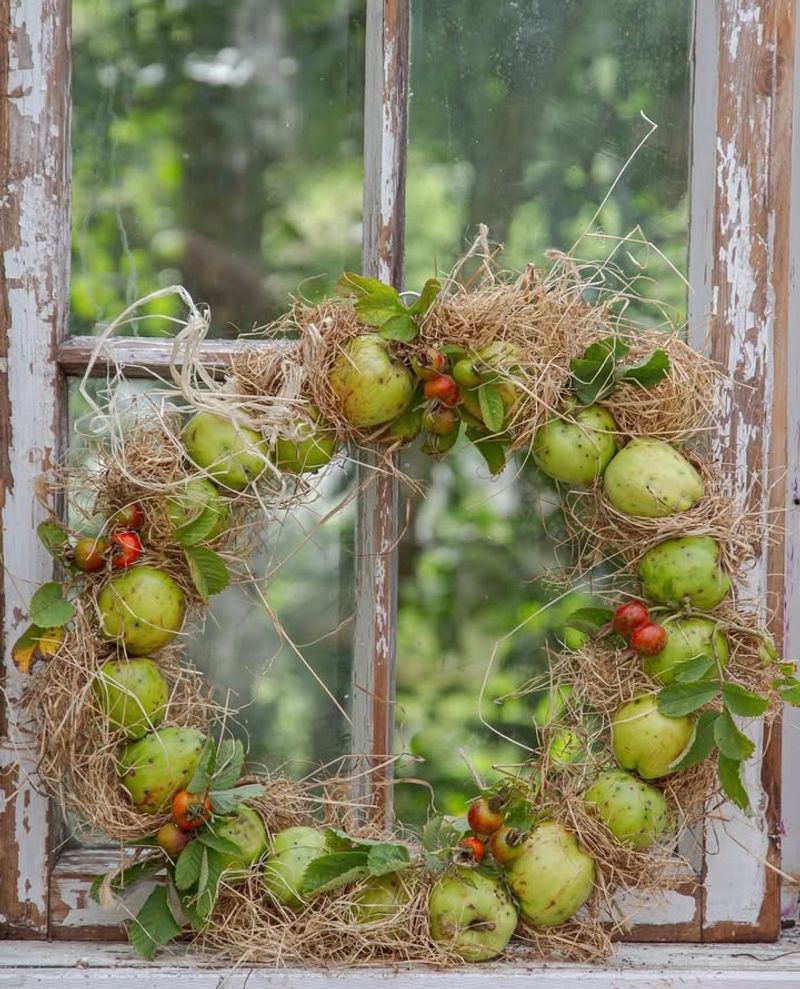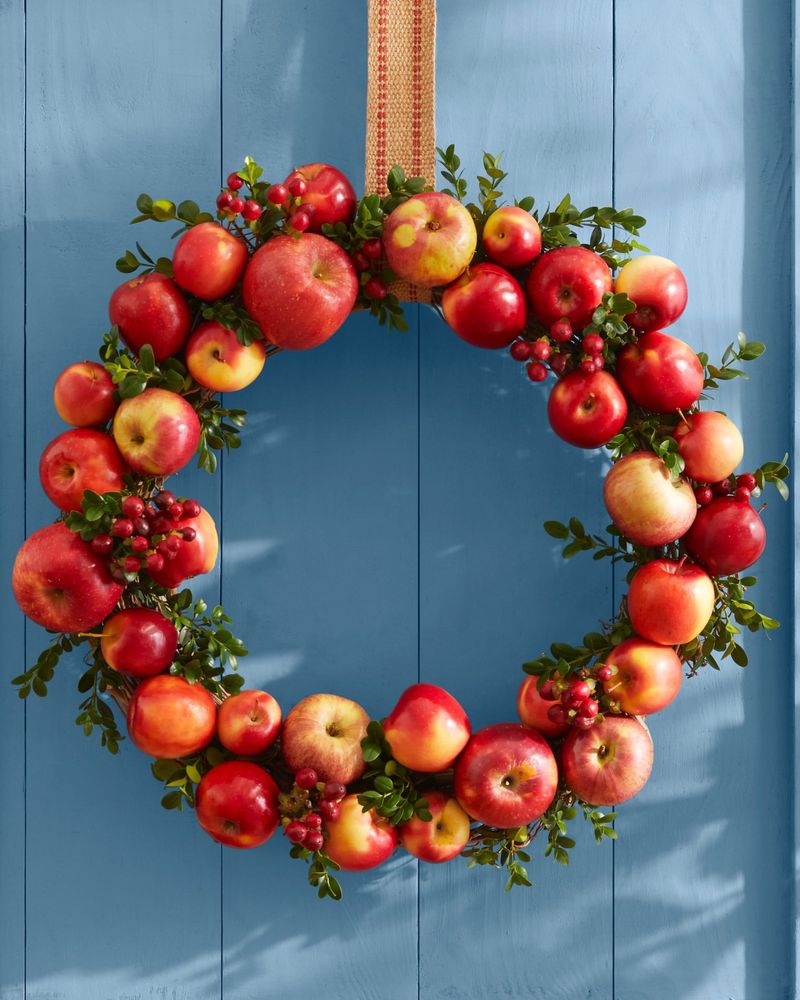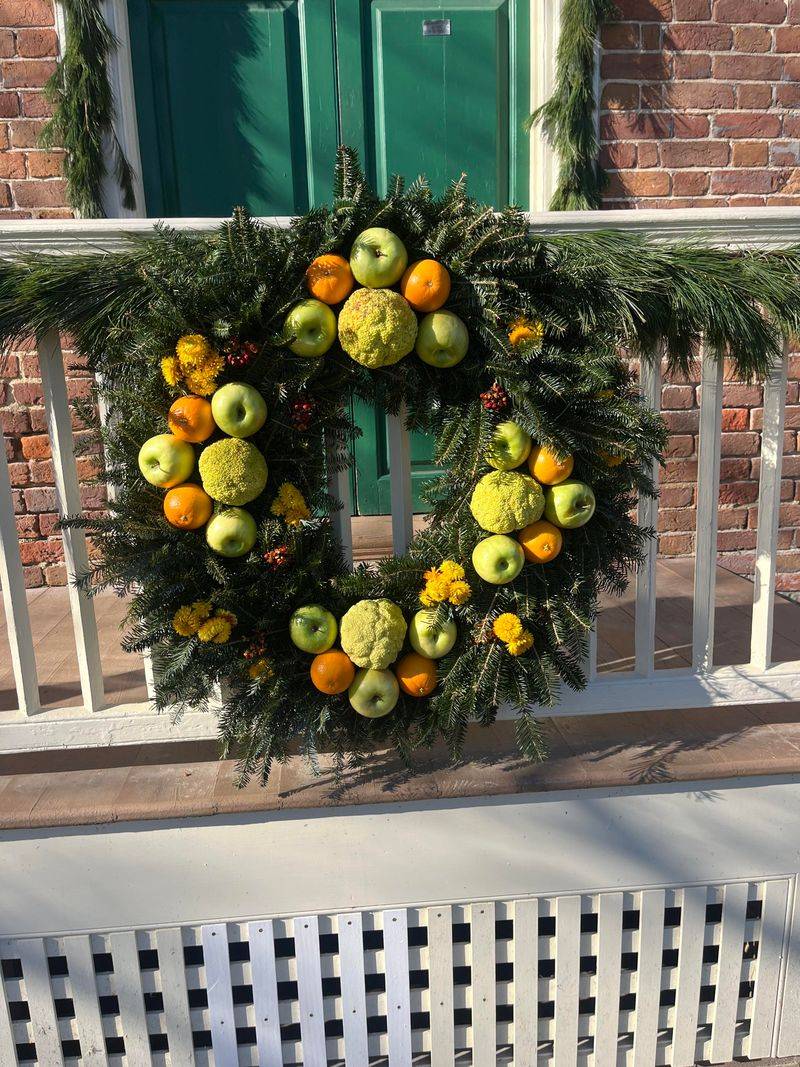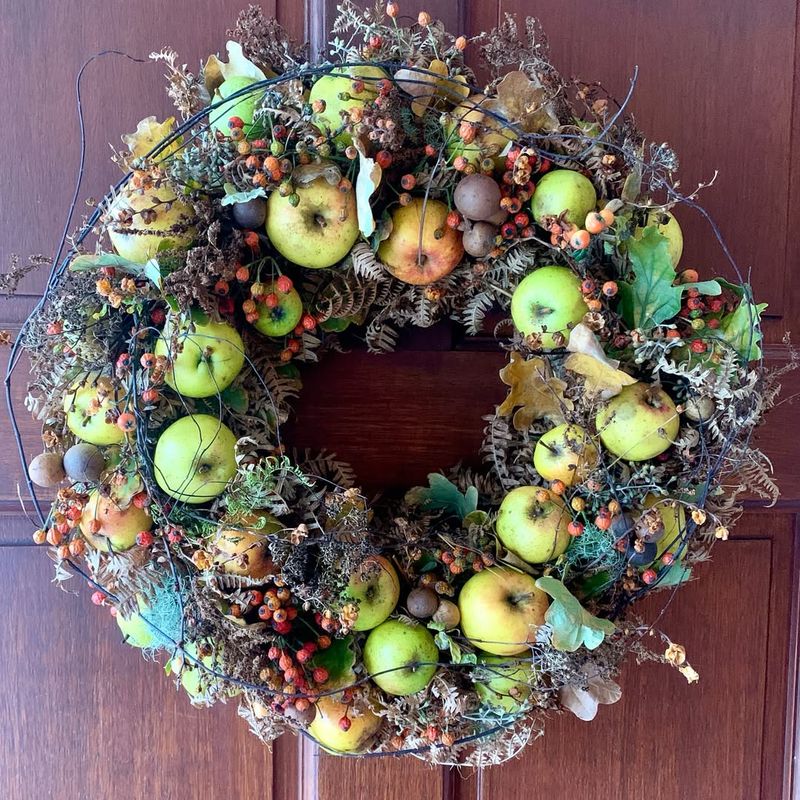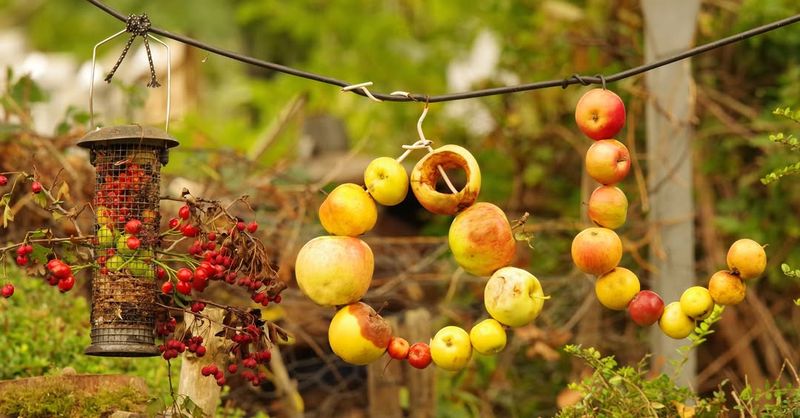Winter in Vermont can be harsh for our feathered friends, making it difficult for them to find food.
Creating an apple wreath bird feeder is a fun and easy way to help birds survive the cold months while adding a natural decoration to your yard.
This simple project combines fresh apples with birdseed to create an irresistible feeding station that birds will flock to all season long.
Pick The Perfect Apples
Choosing the right apples makes all the difference for your feeder. Firm varieties like Granny Smith, Honeycrisp, or Red Delicious work best because they hold up well in freezing temperatures and won’t turn mushy quickly.
Avoid soft apples that bruise easily, as they’ll break down faster in winter weather. Local Vermont apples from fall harvests are ideal since they’re already adapted to cold conditions.
Grab about eight to ten medium-sized apples for a standard wreath that will last several weeks.
Gather Your Wreath Base Materials
Your base determines how sturdy your feeder will be. A wire wreath frame from any craft store provides excellent support, or you can use a natural grapevine wreath for a more rustic look.
Make sure the frame measures between twelve and sixteen inches in diameter for optimal apple placement. Natural materials blend beautifully with Vermont’s winter landscape and give birds comfortable perching spots.
Strong floral wire or jute twine will help secure apples firmly to your chosen base.
Prepare Apples With Strategic Holes
Creating the right openings in your apples allows birds to access seeds and fruit easily. Use an apple corer or a sturdy knife to cut holes completely through each apple from top to bottom, making them about one inch wide.
These tunnels let you thread the apples onto your wreath base while providing feeding stations. Some crafters create multiple smaller holes instead of one large opening for variety.
Work carefully to keep your cuts clean and centered for the most attractive finished product.
Add Peanut Butter Coating
Peanut butter acts like magic glue for birdseed while providing essential fats birds need during Vermont’s frigid winters. Spread a generous layer of natural, unsalted peanut butter all over each apple’s exterior, working it into the cored holes too.
The sticky coating helps seeds adhere and gives woodpeckers, chickadees, and nuthatches an extra protein boost. Room temperature peanut butter spreads much easier than cold spreads straight from the refrigerator.
Choose brands without added sugar or salt for healthier bird nutrition.
Roll Apples In Quality Birdseed
Selecting premium birdseed attracts the widest variety of winter birds to your Vermont yard. Pour your chosen seed mix into a shallow pan or tray, then roll each peanut butter-coated apple thoroughly until completely covered.
Black oil sunflower seeds, millet, and cracked corn work wonderfully for cold-weather species. Press seeds gently into the peanut butter to ensure they stick securely and won’t fall off when you hang the wreath.
Mix in dried cranberries or raisins for extra appeal and nutrition.
Arrange Apples On Your Wreath
Spacing your apples evenly creates a balanced, attractive feeder that birds can access from multiple angles. Thread each prepared apple onto the wreath base through the cored holes, alternating colors if you used different apple varieties for visual interest.
Secure each apple with floral wire or twine wrapped around the base to prevent spinning or falling. Leave small gaps between apples so birds have landing room and can perch comfortably while feeding.
Step back occasionally to check your arrangement from different angles.
Incorporate Natural Vermont Greenery
Adding local evergreen branches transforms your feeder into a stunning seasonal decoration. Tuck sprigs of pine, fir, or cedar between the apples using the same wire or twine you used for securing fruit.
These additions provide extra perching spots and shelter from wind while making your wreath look festive. Vermont’s native winterberry branches with their bright red berries offer additional food sources and gorgeous pops of color.
Avoid using toxic plants like holly or yew that could harm birds if ingested.
Choose The Ideal Hanging Location
Location determines how many birds will discover and use your feeder. Hang your wreath where you can easily observe it from inside, preferably near existing feeders or natural bird habitats in your yard.
Pick a spot with some overhead protection from heavy snow but enough openness that birds feel safe from predators. Trees with nearby branches give birds quick escape routes if needed.
South-facing locations receive more sunlight, helping keep apples from freezing solid too quickly in Vermont’s deep cold.
Maintain Your Feeder Regularly
Regular upkeep ensures your feeder remains safe and attractive to birds throughout winter. Check your wreath every few days to brush off accumulated snow and ice that might prevent birds from accessing food.
Remove any apples that become overly mushy or moldy, replacing them with fresh ones to maintain hygiene. Refill empty spots with new seed-covered apples or add extra peanut butter and seeds to existing apples.
Clean surrounding areas of discarded seeds and shells to prevent rodent problems beneath your feeder.





